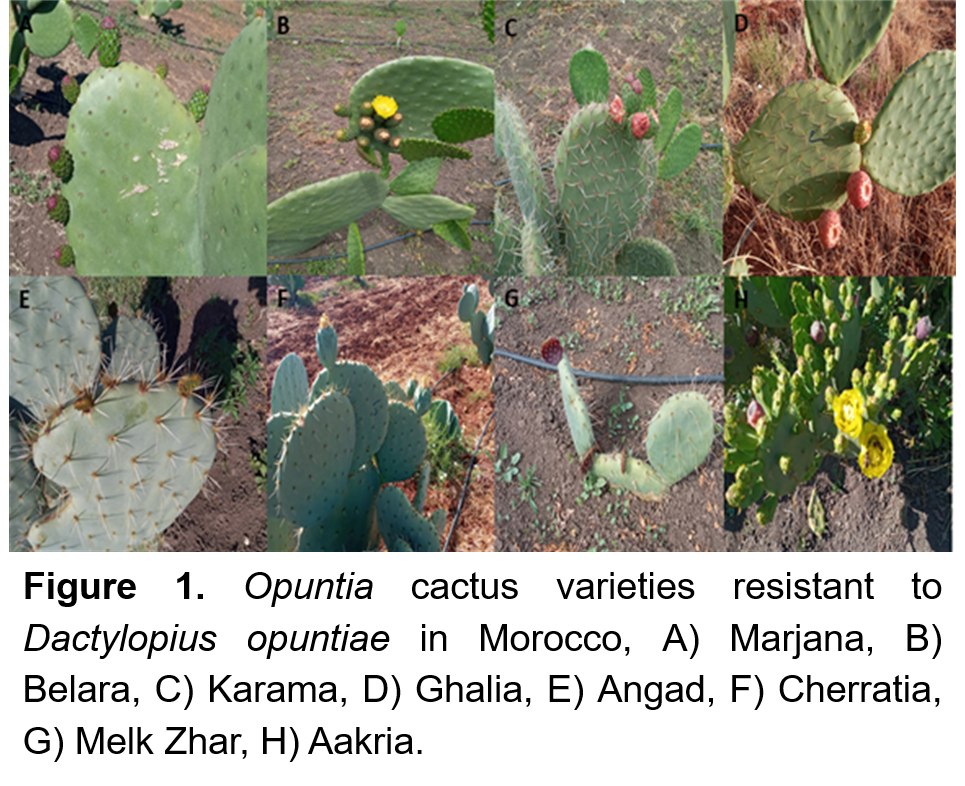Morphological and phenological characterization of Moroccan Opuntia cactus varieties (Karama, Ghalia, Belara, Marjana, Cherratia, Angad, and Melk Zhar) resistant to the cactus cochineal Dactylopius opuntiae (Cockerell)
DOI:
https://doi.org/10.56890/jpacd.v25i.519Keywords:
Cactus; morphological attributes; flowering phenology; fruiting phenology; Morocco.Abstract
In recent years, Opuntia cactus cultivation has been seriously threatened by the appearance of Dactylopius opuntiae (Cockerell) (Hemiptera: Dactylopiidae) in Morocco, and four species with eight cactus pear varieties have been identified by research as resistant to this cochineal, these varieties are already registered in the official catalog of species and varieties in Morocco. A morphological and phenological characterization using twenty morphological attributes of these eight varieties: Karama, Ghalia, Belara, Marjana, Cherratia, Angad, and Melk Zhar were performed. The principal component analysis allowed distinguishing five groups according to the studied characteristics. Aakria with the smallest bright red fruit and very small cladodes (15.8/7.7 cm), Belara with the highest number of cladodes per plant (101.2), large cladodes (36.4/25.8 cm) and very sweet large yellow-green fruit, Marjana with very thick cladodes (2.3 cm) and large and very sweet fruit. The group of varieties (Melk Zhar, Angad and Cherratia) is characterized by wide and thorny cladodes, the longest thorns and fruits of large size (202.5- 276.7 g). The group containing the varieties (Karama and Ghalia) is characterized by large cladodes (33.4-36.0/16.4-25.6 cm) and medium size fruits (98.5-115.6 g). Also, the periods of vegetative and floral budding, and flowering were the longest for Aakria and the shortest for Marjana. The period of fruit development was the longest for Aakria and the shortest for Marjana. In conclusion, these morphological and phenological variations among the eight cactus pear varieties identified as resistant to D. opuntiae in Morocco could be the subject of breeding programs.
Publication Facts
Reviewer profiles N/A
Author statements
Indexed in
- Academic society
- Journal of the Professional Association for Cactus Development
- Publisher
- Professional Association for Cactus Development




